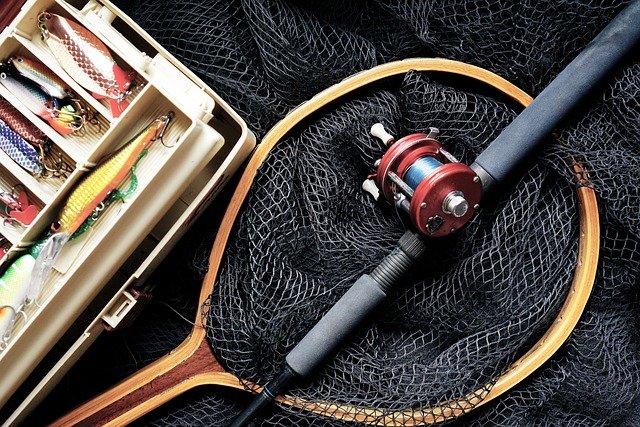Panfish Boats: A Practical Guide to Choosing, Outfitting, and Using Small Fishing Boats
Panfish boats offer anglers an excellent platform for targeting bluegill, crappie, perch, and other smaller freshwater species. These specialized vessels combine portability, affordability, and functionality to create the perfect fishing experience in lakes, ponds, and calm waters. Understanding the various options available, from construction materials to essential features, helps ensure you select the right boat for your panfishing adventures while maximizing your time on the water.

Panfish represent some of the most popular freshwater game fish, and having the right boat can significantly enhance your fishing success. These smaller vessels are specifically designed to navigate shallow waters where panfish typically congregate, offering anglers improved access to prime fishing locations while maintaining the stability needed for precise presentations.
Types of Panfish Boats and Hull Designs
Panfish boats come in several distinct hull configurations, each offering unique advantages for different fishing scenarios. Flat-bottom boats provide excellent stability in calm waters and can access extremely shallow areas where panfish often feed. Their wide beam creates a stable casting platform, making them ideal for standing while fishing. Jon boats represent the most common flat-bottom design, featuring simple construction and easy customization options.
V-hull boats offer better performance in choppy conditions and provide smoother rides when traveling longer distances. Modified V-hulls combine elements of both designs, featuring a shallow V-shape that transitions to a flatter section toward the stern. This configuration balances stability with improved handling characteristics.
Pontoon boats have gained popularity among panfish anglers due to their exceptional stability and spacious decks. These boats excel in calm waters and provide ample room for multiple anglers, making them perfect for family fishing trips targeting panfish.
Key Features and Construction Materials to Consider
Aluminum construction dominates the panfish boat market due to its lightweight properties, corrosion resistance, and affordability. Marine-grade aluminum withstands freshwater environments while remaining easy to maintain. The material’s light weight allows for easier launching and retrieval, particularly important when accessing smaller bodies of water.
Fiberglass boats offer superior ride quality and often feature more refined finishes, but they typically cost more and weigh significantly more than aluminum alternatives. For panfish applications, the added weight rarely justifies the increased expense unless you frequently fish larger waters with rougher conditions.
Essential features include adequate seating arrangements, built-in storage compartments, and mounting points for accessories. Live wells keep panfish healthy for release or consumption, while rod holders free up hands for boat operation and fish handling. Consider boats with carpeted floors or non-skid surfaces to improve footing when moving around the vessel.
Essential Gear, Electronics, and Storage Solutions
Modern panfish boats benefit greatly from fish finders and GPS units that help locate structure and mark productive fishing spots. Depth finders prove particularly valuable since panfish often relate to specific depth ranges and bottom compositions. Side-imaging sonar can reveal schools of panfish suspended in open water or relating to submerged structure.
Trolling motors provide quiet propulsion that won’t spook panfish in shallow water. Electric motors allow for precise boat positioning and hands-free operation while fishing. Battery systems should provide adequate power for full-day fishing trips, with marine deep-cycle batteries offering the best performance and longevity.
Storage solutions include tackle boxes designed to fit under seats, rod storage systems that protect equipment during transport, and coolers that maintain fish quality. Dry storage compartments protect electronics, spare clothing, and safety equipment from moisture.
| Boat Type | Length Range | Price Range | Best Features |
|---|---|---|---|
| Jon Boat | 10-16 feet | $800-$3,000 | Shallow draft, customizable |
| Bass Boat | 16-20 feet | $15,000-$40,000 | Speed, electronics, storage |
| Pontoon | 16-24 feet | $12,000-$35,000 | Stability, deck space |
| Aluminum V-Hull | 14-18 feet | $5,000-$15,000 | Versatility, rough water |
Prices, rates, or cost estimates mentioned in this article are based on the latest available information but may change over time. Independent research is advised before making financial decisions.
Maintenance, Safety Checks, and Legal Requirements
Regular maintenance ensures reliable operation and extends boat life. Aluminum boats require periodic inspection for corrosion, particularly around welds and fittings. Rinse the boat thoroughly after each use to remove debris and prevent buildup that could lead to corrosion or damage.
Engine maintenance follows manufacturer specifications, with particular attention to lower unit oil changes and propeller condition. Trolling motor maintenance includes battery care, connection cleaning, and propeller inspection for damage or fishing line entanglement.
Safety equipment requirements vary by location and boat size, but typically include personal flotation devices for each occupant, throwable flotation devices, fire extinguishers, sound signaling devices, and navigation lights for boats used after dark. Registration requirements depend on boat size and motor horsepower, with most states requiring registration for boats with motors exceeding specific thresholds.
Fishing Techniques and Boat Positioning for Panfish Success
Effective panfish boat positioning requires understanding fish behavior and environmental factors. Panfish often congregate around structure such as fallen trees, weed beds, and drop-offs. Position the boat to allow casting to these areas while maintaining enough distance to avoid spooking fish.
Drift fishing works well for covering water efficiently while searching for active panfish schools. Use the trolling motor to control drift speed and direction, adjusting based on wind and current conditions. Anchoring becomes necessary when fish concentrate in specific areas, requiring precise presentations to trigger strikes.
Seasonal patterns influence boat positioning strategies. Spring panfish move shallow for spawning, requiring boats capable of accessing areas just a few feet deep. Summer finds panfish relating to deeper structure and suspended in open water, necessitating electronics to locate and stay with moving schools.
Successful panfish boat operation combines proper equipment selection with refined techniques developed through experience. The right boat provides the platform needed to access prime fishing locations while offering the stability and features that enhance fishing success and enjoyment on the water.




